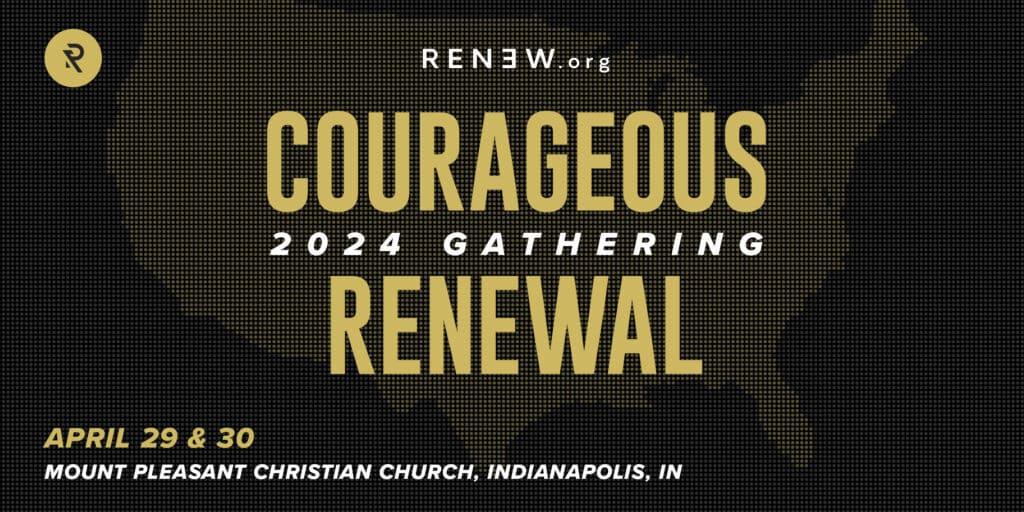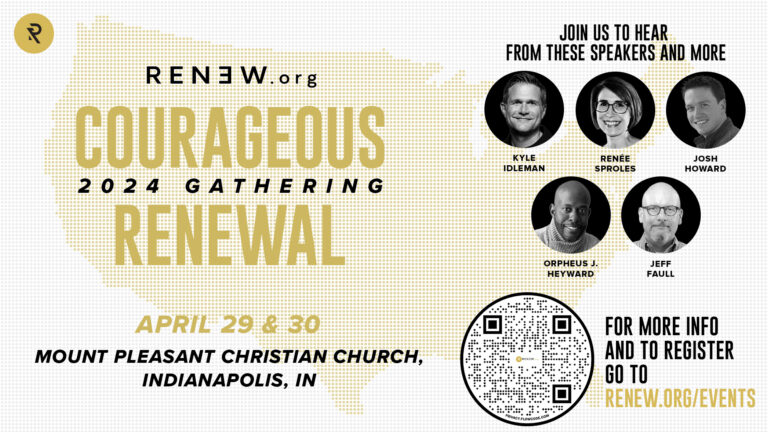A few months before I retired, a newcomer stopped me in the lobby to chat. He wanted to know if we purchased our sermon series. For him, they all seemed to be well-developed, logical, and fit within the overall worship context each Sunday. When I shared that we created all our own material, he responded, “You all are really intentional in what you are doing.”
He was spot-on.
Effective preaching requires intentionality. We only have fifty-two weeks, twenty-six hours, to move a group of people to a preferred future. Less than fifty percent of those listeners will hear all fifty-two messages, so making each message count matters. It seems an impossible task.
On the other hand, we have multiple years, repeated sets of fifty-two weeks, to see transformation occur. When viewed from that perspective, it doesn’t seem nearly so daunting. Every message still matters, but the sense of urgency gives way to a sense of intentional progress.
Benefits of a Sermon Plan
Let me offer a brief plug for planning ahead. I fear too many preachers determine on Monday what they will preach on Sunday (or sometimes they’re still deciding on Friday). I’m hopeful the benefits I’m about to explain will entice you to plan ahead if you are not, and encourage you if you are.
As a map provides perspective for our journey (how far we have to go, how many nights it will take, the quality of the roads we’ll travel, the landscape we’ll encounter), so a sermon plan affords a similar perspective on the year ahead (how big a change we are seeking, what obstacles stand in the way, what measurements to check on progress).
A sermon plan allows the preacher to navigate the journey. It brings order to our thinking which, in turn, produces a logical sequence of sermons for us to develop each week, each season, and beyond.
“A sermon plan allows the preacher to navigate the journey.”
Occasional rest stops allow for reevaluation of our road trip, and built-in spaces in the sermon series allow us to see if we’re making progress. Do we need to repeat some themes, redouble our efforts, elevate our expectations? This rest stop can then help guide our decision making. Because we have planned ahead, we have options not available in a week-by-week non-plan. We can choose to add another series, focus the coming series, insert a special thematic message, or celebrate the wins we are seeing.
Because we know what’s coming, not only next week, but next month and beyond, we can invite the congregation along for the journey. They can be given tools for studying the text, resources for thinking through the goals for which we aim, and opportunities to exercise their newfound maturity. A sermon plan compels them to come back next week so they don’t miss out. Or to invite friends to hear a message they anticipate being helpful.
Let me give a brief caveat: not everyone hears every message, so every message must achieve the balance of being understandable and complete on its own and also fitting into the ongoing emphasis, making sense of sermons that are before and after it.
“Every message must achieve the balance of being understandable and complete on its own and also fitting into the ongoing emphasis.”
An ideal by-product of planning occurs for the preacher and staff. Because we are going to be looking, let’s say, at Romans for nine months, we invest significant time in studying the text and getting the background during the preparation season. Doing so, we have freed more weekly time for sermon development and other ministry responsibilities because we don’t have to repeat those initial studies each week for a text from a different location, genre, etc. Not only that, but the worship team can plan appropriate stage sets, song development, and special features for upcoming sermons because they have several weeks to anticipate what is coming. The discipleship team can select or develop small group curricula to accompany the sermons.
The Process of Developing a Plan
Like any road trip, a sermon plan begins with a destination in mind. Prayer, Scripture reading, contemplation, and conversation provide the fodder for future sermon series. Leadership input feeds the preacher impressions of where the congregation needs to go. In the end, the preacher puts together a goal to be achieved during the year. It answers the question, What characteristic do we want to see inculcated in and by the congregation? There may also be one or two secondary goals.
Having determined the goal(s), you should create a list of metrics. These can include ones which are easily measured (for example, if offerings went up 10% or if five more guests came each month). Other metrics are purely anecdotal. People are asking more questions about giving/generosity, or staff are seeing more students involved in programs each week.
“Having determined the goal(s), you should create a list of metrics.”
Based on the book of Scripture you’re using and the perceived difficulty of making progress, you’ll determine the themes that surface in the text and will be helpful in moving the congregation toward your goal. Once the themes are determined, you can decide if you want to go chronologically through the book or cluster the themes in series. Most would suggest that each mini-series be four to six weeks in length. Each series meets one or more criteria for moving toward the goal.
Once you’ve painted the broad picture of the plan, you can begin work on each series, and ultimately on each sermon. The more detailed the plan can be developed, the more helpful it will be for the preacher on a week-by-week basis and will assist the other ministry teams in their planning.
Include in the plan the textual parameters and purpose for each series. Then include the text, theme, goals/aim, and approach for each sermon. I’ve included a sample series that shows how we’ve chosen to do it for the past several years. Imitating that form is certainly not necessary, but developing a form that works well for your team is.
“Once you’ve painted the broad picture of the plan, you can begin work on each series, and ultimately on each sermon.”
Like everything else in life, sermon planning takes practice. It may be enough to attempt a plan for just the fall season. Then, after seeing how that went, you might seek to develop a six-month plan and then on to a yearly plan. What you would like to see the congregation become takes years. Knowing what you desire and seeing it happen are very different from each other. The intentionality and the work to plan it out are what makes progress happen.
Effective preaching has occurred when we see congregational culture shift and individual lives transform. Those results transpire best when we intentionally aim for them.
Sample Sermon Plan
The following is an overview of a plan for the fall season, concluding just before Advent. It forms the basis from which each sermon can be developed in its fuller form of theme, aim, approach, etc. These two series elevate the quality of living in community—a quality we saw as inherent to being healthy as a church. This was a season of transitioning from a Sunday morning discipleship model to a small group, through-the-week model.
| Focus: Power of Community
Developing our Connect Strategy Paul describes community in Philippians 2:1-4. Verses 1-2 provide the positive side: unity in mind and heart; mutual love and common thinking. Verses 3-4 suggest what is not involved in community. There is no rivalry or conceit. Instead, we put others first; we look out for their interests above our own. Our Connect Ministry gives us an optimal opportunity to develop and implement these key qualities. We will paint pictures of what we long for Madison Park CC to look like and how living in group life can help create these qualities of community. |
||
| August 19
Tyler |
Jesus: Our Model of Selflessness
Philippians 2:5-11 |
Jesus models how we release our rights for the good of others |
| This sermon will need to set the stage by spending some time on what a healthy church looks like in verses 1-4. Jesus then becomes the first model of how to live the selfless life necessary to produce the kind of healthy community that Paul has just described. | ||
| 26
All 3 of us |
Paul: Our Model of Supporting Others
Philippians 2:12-18 |
Paul supports the ministry of others ahead of calling attention to himself. |
| Paul provides a brief exhortation to selflessness (reflected in not grumbling, etc.) as he encourages the Philippians to be models of community health. He then uses himself as another model. He selflessly works to enhance the ministry of others (drink offering).
I would see this sermon unfolding either as three segments or as a conversation. As segments, I would propose: 1) Verses 12-13 (Chuck explaining that a healthy community requires people who are willing to continue to work at what God is seeking. We don’t just leave it up to God. There is intentionality on our part), 2) Verses 14-16 (Tyler reflecting on the purpose for health not being just our peace and the joy of going to a harmonious church. Rather, it serves the purpose of being a light to a broken, chaotic world), 3) Verses 17-18 (Keith developing the idea that the only way that happens is when we are supportive of the ministry of others. It isn’t about us and what any one of us does. It’s about how we function together to elicit the very best from those around us). If it’s a conversation, I would see Keith guiding a discussion of the above issues with all three of us contributing on the various ideas. |
||
| September 2
Chuck |
Timothy and Epaphroditus: our Models of Sacrificing for Others
Philippians 2:19-30 |
T&E both sacrificed to serve others. E almost lost his life. T is characterized as “genuinely concerned.” |
| This sermon builds on the previous two by developing the final two models presented by Paul: 1) Timothy, the only one to show genuine concern for others, 2) Epaphroditus, the one willing to risk his very life for others. These models of selflessness are the key to a healthy community. Through Connect groups, we hope to cultivate these kinds of attitudes in the lives of people.
Healthy churches are light in the darkness just as unhealthy churches spill darkness over into the community around them. Light/health is attractive and make others want what we have. Darkness/disunity causes people to want nothing to do with the church community. |
||
| Focus: Elevating Jesus
Connect study that weds Connect and Encounter |
||
| “If then you have been raised with Christ, seek the things that are above, where Christ is, seated at the right hand of God. Set your minds on things that are above, not on things that are on earth. For you have died, and your life is hidden with Christ in God. When Christ who is your life appears, then you also will appear with him in glory.” (Col. 3:1-4, ESV) | ||
| Sept 9
Chuck |
Focus: On Christ being your life
Col. 3:1-4 |
Overview of Colossians; kick-off of Connect groups—typical first session |
| 16
Chuck |
Focus: Life in the Kingdom of Jesus
Col. 1:1-14 |
Praying for one another to live according to the kingdom of God—life of forgiveness |
| 23
Tyler |
Focus: Jesus, the Supreme One
Col. 1:15-23 |
Jesus is pre-eminent; reconciles us to God; we proclaim Him |
| 30
Chuck |
Focus: Jesus, Source of Maturity
Col. 1:24-2:5 |
Paul’s ministry focuses on helping people mature in Christ, which only happens through Jesus |
| Oct 7
Chuck |
Focus: Jesus, the Sufficient One
Col. 2:6-23 |
We don’t need “Jesus, Plus”—we need “Jesus, Alone”; Paul confronts: tradition, human philosophy, law, legalism |
| 14
Tyler |
Focus: Jesus, the Source of a Life Lived Well
Col 3:1-4:1 |
Jesus provides the model and the means of becoming who we should be. His life in us reshapes how we approach life, including the most basic of relationships |
| 21
Tyler |
Focus: Jesus, the Subject of our Proclamation
Col 4:2-6 |
Prayer and proclamation dominate this paragraph. We cannot live separated lives; we live among those who need Jesus |
| 28
Chuck |
Focus: Jesus and His People
Col 4:7-18 |
Key people in the life of Paul and the church; how they each contribute or what they each need |











